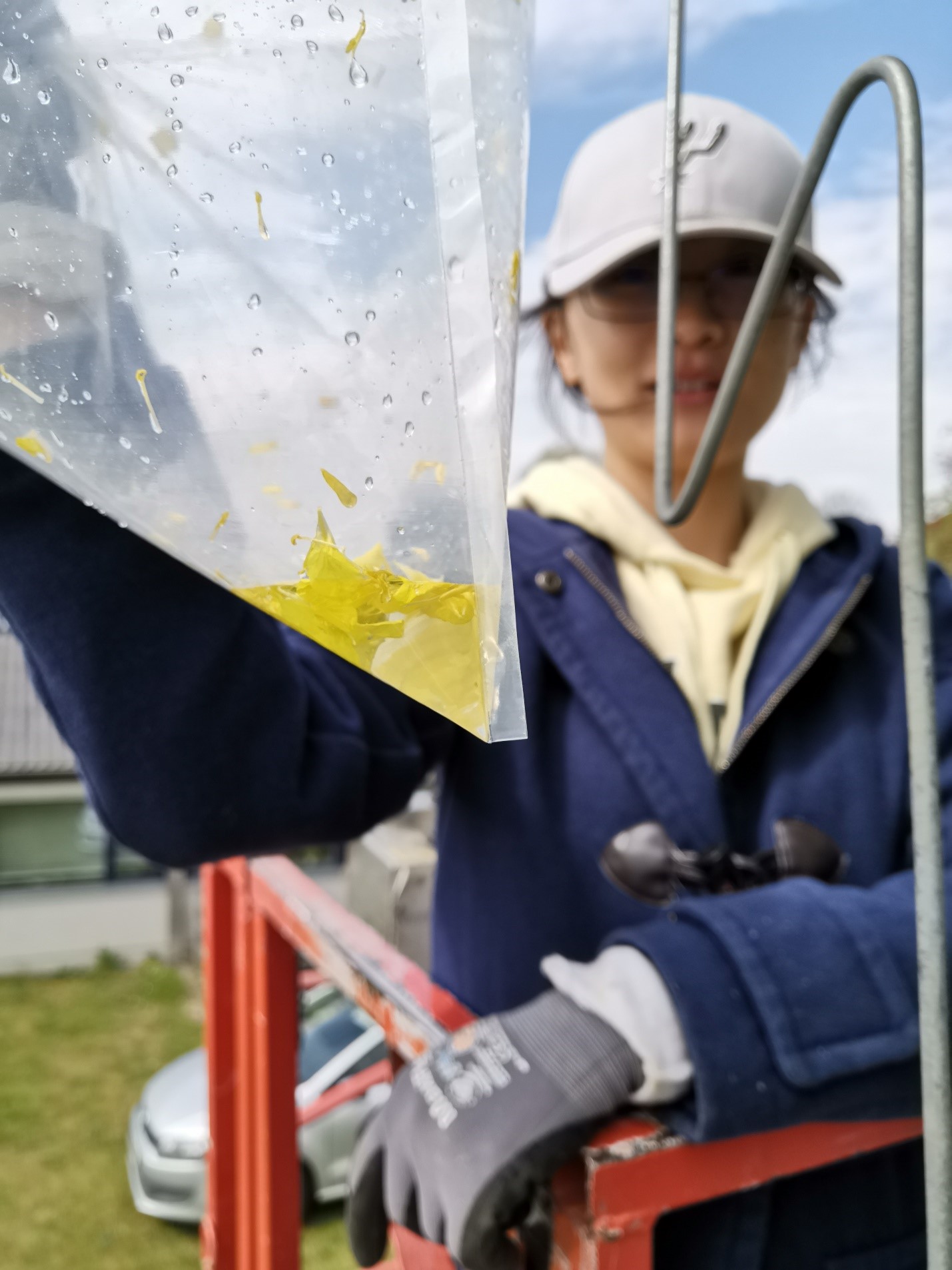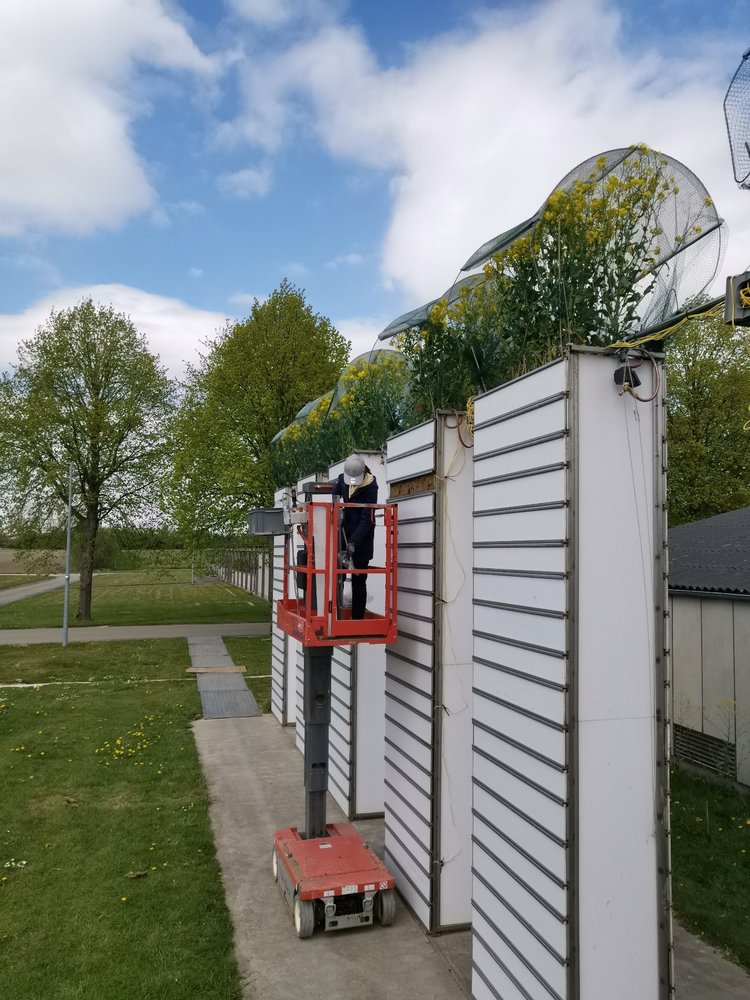New insights on water- and nitrogen uptake in deep roots
As part of her Ph.D.-studies at Dept. of Plant and Environmental Sciences at University of Copenhagen, Guanying Chen has studied deep root and water- and nitrogen uptake during the course of the Deep Root project. She has carried out studies in the root towers facilities, focusing on the crops chicory and winter rapeseed. This led to some interesting and quite surprising findings.

Chicory can use water and nitrogen down to 3,5 meters soil depth. This was one of the main findings in Guanying Chen’s studies which she have just finished as part of the Deep Frontier project. The potential for uptake of water and nitrogen are different, though: The study showed that the deep roots took up nitrogen more rapidly than water. This difference was quite surprising, because nitrogen- and water uptake normally are considered to follow each other closely, but this was not the case in this study:
Compared with nitrogen, root water uptake have a tendency to decrease with increased depth and less roots. Only a part of the available water was taken from deep layers. On the other hand, roots were able to take up nearly all nitrogen available in the deep soil layers.
There can be several reasons for the observed difference in water and nitrogen absorption rates. Firstly, due to several reasons, water uptake was higher in the upper soil layers than in the lower ones, and along a single root, the radial flux was higher in the proximal segments. These radial and axial resistances, may inhibit root water uptake from subsoil but no evidence have been shown for similar inhibition of nitrate uptake. Secondly, the water supply from the topsoil may have been sufficient to supply most of the water demand by the plants with repeated irrigation to the topsoil, while the nitrogen demand by the plants exceeded the topsoil supply, leading them to deplete all available soil layers.
New knowledge - improved models
The new insights can be used to more accurately predict nutrition uptake in deeper soil layers through modelling.
Guanying Chen explains: “We hope our findings can help modellers to better simulate the uptake. The models we have now are not perfect and need to be developed, e.g. we found water and nitrogen uptake below two meters, and almost no models can simulate that, so we hope our findings can help to more precisely calibrate the models.”
Previously, other studies have shown that more than 30 percent of water uptake in crops happens below 1 meters’ depth.
To follow up, Guanying Chen made further studies in which the fertilization level and the water level were changed to see how deep roots were performing under water stress and with different nitrogen applications. These studies were made using winter rapeseed, a crop that has been widely cultivated all over the world. With roots growing more than 2 meter depth, winter rapeseed can efficiently take water and nitrogen from deep soil layers, thus reduce the risk of nitrogen leaching. Compared with high nitrogen application rate, applying less nitrogen was able to enhance deep (> 1.5 m) nitrogen uptake efficiency; while more nitrogen application enhanced deep water uptake as plants grew bigger and required more water. Under drought stress, the total water uptake decreased and more water was taken by deep roots; deep nitrogen uptake was not significantly affected by water status. In conclusion, deep roots play an important role on water and nitrogen uptake when plants were exposed to water and N deficiency. These findings have refreshed the knowledge of deep roots, although they present a small proportion in soil, deep roots contribute a lot to resources uptake, especially under stresses.
Read more on Deep Frontier in our open access archive Organic Eprints
